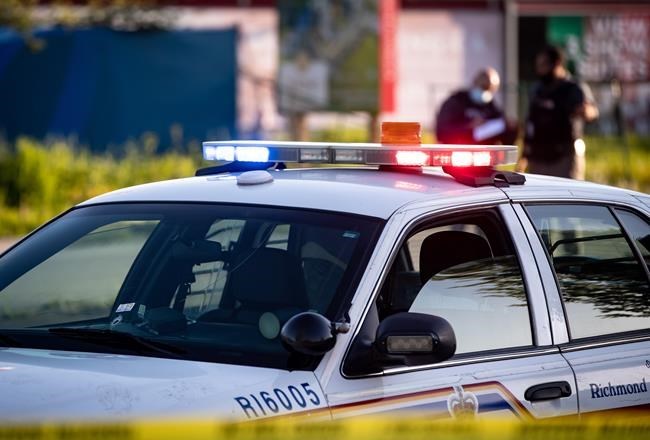Vancouver police have taken the unusual step of naming six alleged gang members after a series of shootings in public places, saying investigators don't expect the conflict to subside.
Chief Const. Adam Palmer said Monday during a news conference that his biggest concern is that a bystander will be hurt or killed during a gang-related shooting.
There have been 20 gang-related homicides and 20 attempted murders in Metro Vancouver this year, he said.
"Gang violence in Metro Vancouver continues to escalate and police do not expect this trend to stop any time soon," Palmer said.
Investigators believe the men may be targeted in the coming days, weeks or months, he said.
"These six individuals pose a risk to the people around them because it's highly likely that a rival gangster will try to target them with extreme violence," he said.
"And we know these violent acts are happening brazenly in public places, in broad daylight in crowded areas."
In the last month, deadly shootings have happened outside restaurants, in shopping centre parking lots, on busy streets and in front of the departure terminal at Vancouver's airport.
On Thursday, a man was killed and two others were hurt in a shooting in the parking lot of a shopping area in Burnaby.
Police said the victim, Jaskeert Kalkat, 23, and a man and a woman with him were all targets in the shooting.
Police identified 28-year-old Karman Grewal as the victim in the airport shooting. He was one of five men named by the RCMP as potential targets of shots-fired incidents in a 2017 news release.
Palmer said to expect more photos because police have "huge concerns in Vancouver" about "these local gangsters."
Police have gone through a legal framework in not just obtaining but also releasing their photographs, he said.
"In the case of public safety warnings, like a duty to warn the public, somebody doesn't necessarily have to be convicted of a crime," Palmer said.
Deputy Chief Const. Fiona Wilson announced Task Force Threshold, a new initiative launched Thursday, to address the surge in gang violence that brings together various groups including BC Corrections, Canada Border Services Agency, Crown prosecutors and local bars and restaurants.
The task force had a significant success on the day it was launched where it "disrupted planning for a gang-related shooting in South Vancouver," Wilson said.
Lisa Byrne, superintendent of investigative services, said police identified a stolen car "connected to gang activity in Vancouver."
Police have observed a common theme with the latest gang conflict where people are "flying in" from other jurisdictions to Vancouver to commit crimes, which makes it difficult to identify them, she said.
Robert Gordon, a criminology professor at Simon Fraser University, said the police release of photos is part of a strategy of social isolation.
"It's come in various forms over the years, always as a result of an intensive period of violence," he said in an interview.
"It's dressed up as an attempt to try to protect members of the public who might be associated with these people. In fact, the idea is to isolate them and stigmatize them."
This plan works well, he said, along with other measures.
Gordon said police did something similar 10 years ago, handing out photos and names of suspects at bars, pubs and restaurants, asking owners to ban gang members from their venues.
Gang violence in Metro Vancouver goes through peaks and valleys, and the most troubling thing during such events is when innocent bystanders get caught in the crossfire, he said.
"This, too, shall pass," he said, but only if the police co-ordinate their activities.
Delta Police Chief Neil Dubord said in a statement his department launched a new team with a "high-profile presence" to intercept potential gang-related activity in public places including popular restaurants.
"Unfortunately it is estimated that 50 per cent of today's gang members are in their teens," Dubord said.
"And contrary to what some might think, it's not poverty that has driven them to crime. These youths typically come from a middle-class background but may suffer from other forms of trauma."
Palmer said law enforcement will use an "aggressive” and “holistic” approach in pursuing gang suspects.
"In addition to coming out to them with criminal charges, we're going to come out to them in every way possible through federal statutes and provincial statutes," he said.
"We're also going to make it uncomfortable for them when they're just out driving around or hanging out in locations in Vancouver and regionally. And we're just going to make it very difficult for people who cause extreme violence or could be victims of extreme violence in our communities."
This report by The Canadian Press was first published May 17, 2021.
Hina Alam, The Canadian Press



